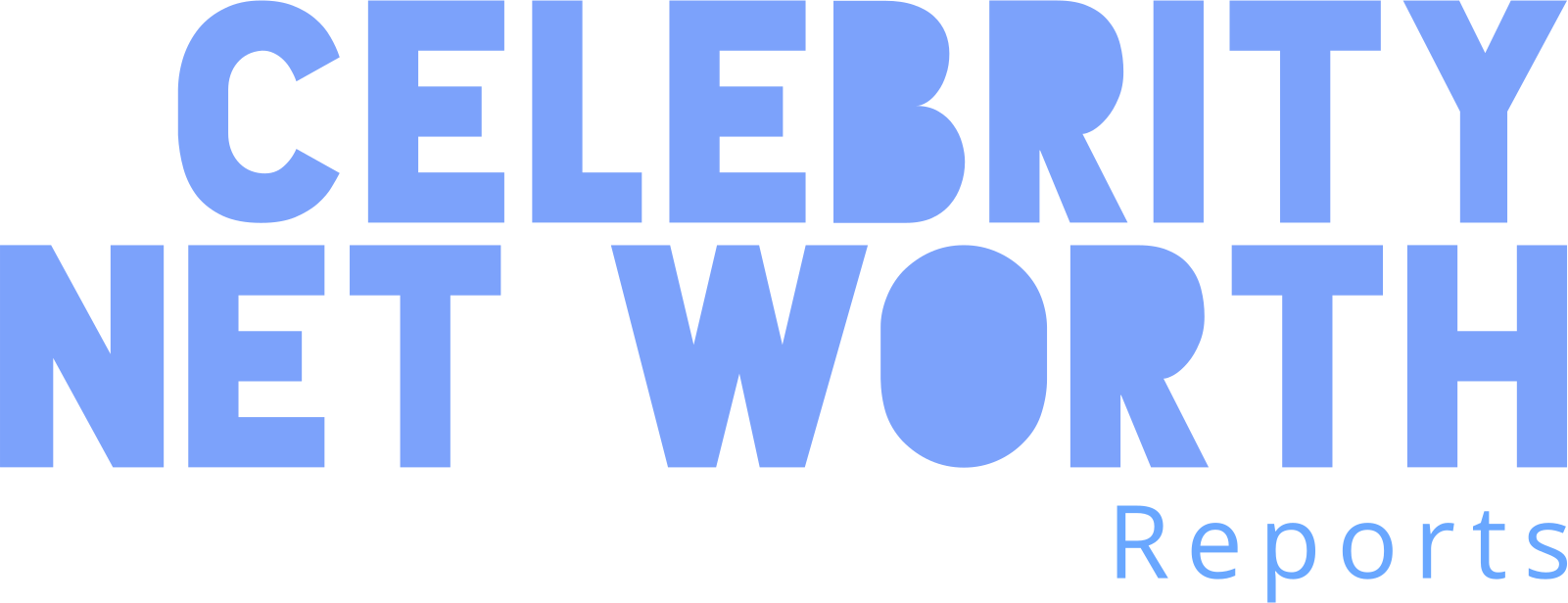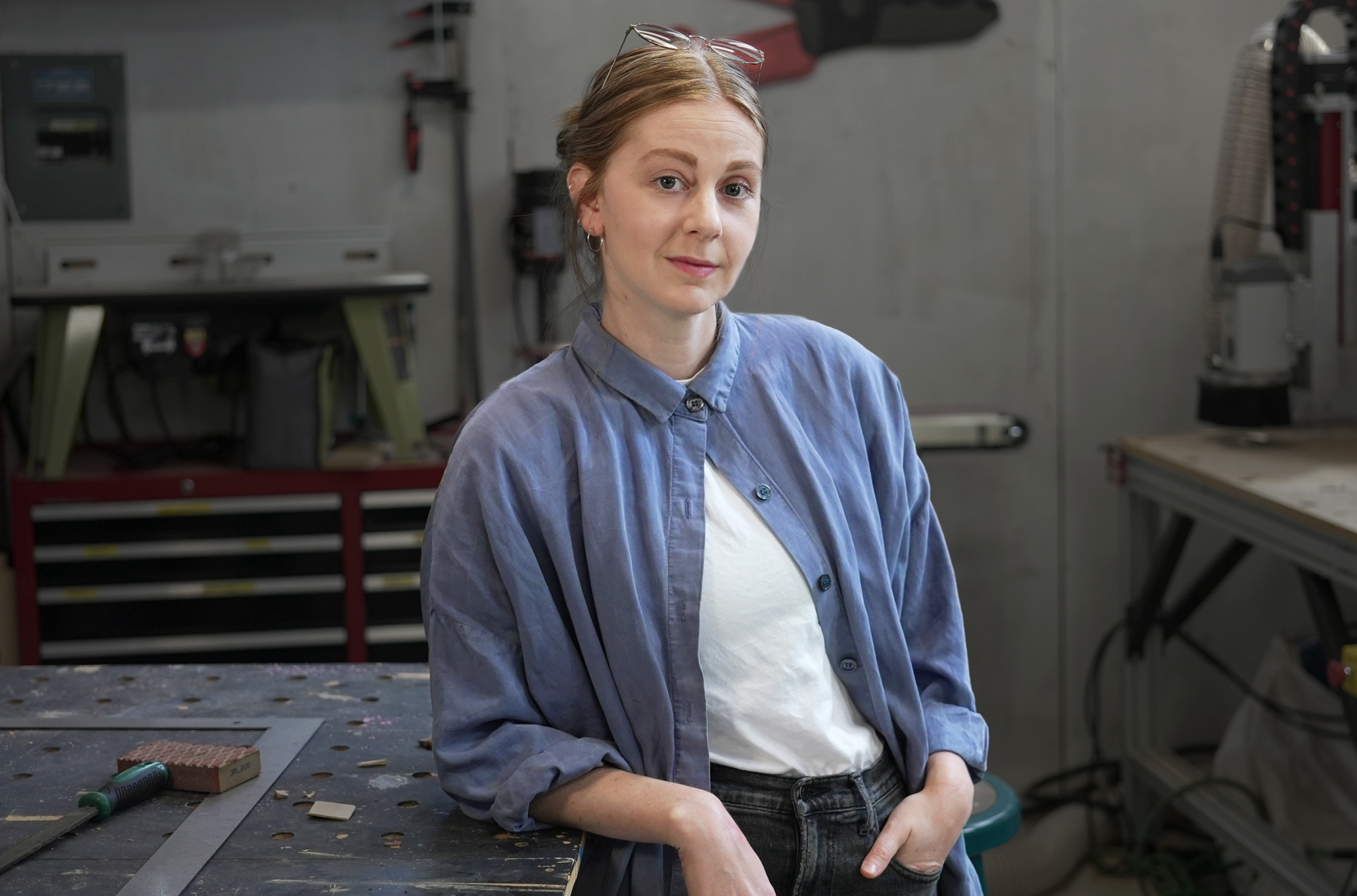Simone Giertz: Engineering Entertainer and Unconventional Inventor
Simone Giertz has carved out a unique position at the intersection of engineering, entertainment, and entrepreneurship, transforming a quirky YouTube niche into a multifaceted career that challenges conventional notions of both invention and content creation. At 33, the self-proclaimed “queen of shitty robots” has built a global following through her distinctive approach to making—one that embraces failure, celebrates iteration, and combines technical skills with genuine comedic talent.
Early Life and Educational Path
Born in Stockholm, Sweden on November 1, 1990, Giertz grew up in an environment that fostered both creativity and intellectual curiosity. Her mother, Caroline Giertz, worked as a television host focusing on paranormal phenomena, while her father brought technical expertise as an inventor and programmer. This blend of media savvy and technical knowledge in her household created a foundation for Giertz’s later fusion of entertainment and engineering.
Unlike many notable engineers who displayed precocious technical abilities from childhood, Giertz has described herself as “not particularly technical” in her early years. Her path to engineering developed through curiosity and experimental learning rather than conventional technical education—an approach that would later become central to her public identity and message about accessibility in STEM fields.
“I wasn’t the kid taking apart the television,” she explained in a 2018 interview. “I was interested in creative expression and communication first, and then discovered that building things could be another form of expression—one where I could create physical manifestations of ideas and jokes.”
Giertz’s formal education took several turns before finding its focus. After briefly studying physics at university, she determined that traditional academic approaches didn’t align with her learning style. This realization led her to Hyper Island in Stockholm, an educational institution focused on creative, digital, and interactive problem-solving—a better match for her interdisciplinary interests and hands-on learning preferences.
The Hyper Island experience proved pivotal in developing Giertz’s approach to creating and sharing work. The school’s emphasis on project-based learning, creative problem-solving, and digital communication provided tools that would later define her content creation style. Perhaps most importantly, it reinforced the value of iteration and experimentation—concepts that would become central to her “shitty robots” philosophy.
Following her time at Hyper Island, Giertz’s path included a year living in China, where she worked teaching English while immersing herself in a radically different cultural environment. This international experience expanded her perspective and communication skills, preparing her for the global audience she would later build.
The Genesis of “Shitty Robots”
Giertz’s breakthrough creative concept emerged from the intersection of several interests: maker culture, comedic expression, and an interest in challenging perfectionistic approaches to engineering. In 2013, she began experimenting with Arduino microcontrollers and basic robotics, teaching herself the fundamentals of electronic design and programming through online resources and hands-on experimentation.
What distinguished her approach from countless other maker enthusiasts was her deliberate embrace of imperfection and humor. Rather than striving for optimized functionality—the traditional goal of engineering—Giertz created robots specifically designed to perform everyday tasks poorly, often with comedic and occasionally destructive results.
Her first viral creation, the “Breakfast Machine,” exemplified this approach: a rudimentary robotic arm that attempted (and spectacularly failed) to feed her cereal, spilling milk and flinging food in the process. The video documentation of this intentional failure, featuring Giertz’s deadpan reaction to the chaos, established the template for what would become her signature content.
“I realized there was something inherently funny about taking this advanced technology that’s supposed to make our lives easier and having it completely fail at simple tasks,” Giertz explained when discussing her creative philosophy. “It became a way to poke fun at our techno-optimism while also making engineering more approachable.”
This counterintuitive approach—celebrating failure in a field traditionally focused on perfectionism—resonated deeply with audiences beyond typical engineering enthusiasts. By making the process entertaining and emphasizing her own learning journey, Giertz created content that appealed to viewers with no technical background while still engaging those with engineering expertise.
As her YouTube channel grew, Giertz refined both her technical skills and comedic presentation. Early projects like the “Wake-Up Machine” (an alarm clock that slapped her awake with a rubber arm) and the “Lipstick Robot” (which chaotically applied makeup) demonstrated increasing technical complexity while maintaining the fundamental concept of intentionally flawed design.
YouTube Success and Audience Building
What began as experimental content quickly developed into a substantial YouTube presence, with Giertz’s channel gaining rapid popularity throughout 2015 and 2016. Several factors contributed to this breakthrough:
- Distinctive Concept: The “shitty robots” premise offered a unique angle in the crowded maker content space, distinguishing Giertz from countless channels focused on optimization and perfection.
- Authentic Persona: Giertz’s on-camera presence—combining deadpan humor, self-deprecation, and genuine enthusiasm for making—created an approachable character that audiences found both entertaining and relatable.
- Visual Comedy: The inherently visual nature of her robots’ failures translated perfectly to video format, creating immediately shareable content that spread across social platforms.
- Technical Evolution: Despite the comedic premise, viewers could observe Giertz’s genuine technical growth over time, creating a narrative of improvement that engaged audiences beyond the immediate humor.
As her subscriber count grew into the hundreds of thousands, Giertz expanded both the scope and ambition of her projects. This evolution included collaborations with established makers like Adam Savage of “Mythbusters” fame and appearances on engineering-focused channels that introduced her work to broader technical audiences.
Media studies researchers have noted the particular significance of Giertz’s approach in broadening engineering content beyond its traditionally male-dominated audience demographics. By emphasizing accessibility, learning processes, and humor over technical jargon and perfectionism, she created entry points for viewers traditionally underrepresented in engineering content.
“What Simone accomplished was creating technical content that doesn’t require technical knowledge to appreciate,” observed Dr. Yasmin Kafai, professor of learning sciences at the University of Pennsylvania. “By centering entertainment and process rather than technical specifications and optimization, she opened maker culture to audiences who might otherwise feel excluded from engineering spaces.”
This inclusive approach became particularly significant as Giertz emerged as one of the few prominent women in maker-focused content creation—a position that came with both opportunity and pressure to address gender disparities in STEM fields.
Evolution Beyond “Shitty Robots”
While the “shitty robots” concept established Giertz’s initial fame, her content has evolved significantly beyond this premise to encompass broader approaches to invention, design, and creativity. This evolution reflected both her growing technical capabilities and her desire to explore more diverse creative territories.
A pivotal moment in this evolution came with the 2019 “Truckla” project—an ambitious undertaking where Giertz and a team of collaborators converted a Tesla Model 3 into a functional pickup truck. This project represented a significant departure from her earlier work in several key dimensions:
- Practical Functionality: Unlike her intentionally useless robots, Truckla was designed to be genuinely functional, addressing a market gap (the lack of electric pickup trucks at that time) with a practical, working solution.
- Scale and Complexity: The project required substantial engineering knowledge, fabrication skills, and collaboration—far beyond the scope of her early Arduino-based creations.
- Production Values: The documentation of the project included a professional-quality commercial parody that demonstrated Giertz’s growing media production capabilities alongside her engineering skills.
The overwhelming positive response to Truckla—including millions of views and coverage across mainstream media outlets—validated this evolution beyond the “shitty robots” concept that had initially defined her online presence.
Following this breakthrough, Giertz continued expanding her creative range with projects spanning furniture design, everyday objects with creative twists, workshop improvements, and various maker challenges. This diversification allowed her to maintain her distinctive humor and approach while exploring new technical territories and avoiding creative stagnation.
Media analyst Alexandra Samuel noted the significance of this evolution: “What’s remarkable about Simone’s career trajectory is how she’s managed to evolve her content without losing her core audience. She’s transitioned from a novelty creator with a single concept to a multifaceted inventor with a distinctive creative voice that transcends any particular project format.”
This evolution has also included increasing behind-the-scenes content documenting her creative process, workshop setup, and the realities of working as an independent creator—elements that provide educational value while deepening audience connection through authentic glimpses into her professional reality.
Health Challenges and Public Vulnerability
In April 2018, Giertz announced to her audience that she had been diagnosed with a non-cancerous brain tumor, initiating a period that would significantly impact both her personal life and her public persona. Her decision to document this health journey—from diagnosis through surgery and recovery—represented a new dimension of vulnerability with her audience.
The brain tumor, located behind her right eye, required major surgery and a substantial recovery period that temporarily halted her creative output. Rather than stepping away from her platform during this challenging time, Giertz chose to share the experience through vlogs and social media updates that maintained her characteristic humor while acknowledging the genuine fear and difficulty of the situation.
“I figured if I was going to spend a bunch of time dealing with this tumor, I might as well get some content out of it,” she explained with typical wry humor in her announcement video. This approach—finding comedy even in genuinely frightening circumstances—resonated deeply with her audience, generating an outpouring of support and further strengthening her connection with viewers.
The tumor, which she named “Brian,” became an unusual subplot in her content narrative, with Giertz approaching the serious medical condition with the same problem-solving mindset and humor she applied to her engineering projects. This included creating tumor-related merchandise with proceeds supporting medical research and regularly updating her audience through the recovery process and a second surgery when the tumor partially returned.
This openness about health challenges expanded Giertz’s influence beyond maker communities to include those navigating similar medical experiences. Healthcare communication researchers have noted the significance of her approach in normalizing discussions of medical conditions and recovery processes, particularly among younger audiences who might otherwise have limited exposure to such topics.
“What Simone demonstrated was the value of authentic communication around health challenges,” observed medical humanities professor Dr. Rachel Adams. “By neither hiding her condition nor allowing it to completely define her, she provided a model for integrating serious health issues into one’s broader identity and narrative rather than treating them as separate from normal life.”
The experience also influenced Giertz’s perspective on her work, leading to reflections on purpose and prioritization that have shaped her subsequent projects. Following her recovery, she has spoken about the way facing mortality clarified her creative goals and encouraged her to pursue more ambitious projects rather than postponing challenging ideas.
Entrepreneurial Ventures and Beyond YouTube
While content creation remains central to Giertz’s public identity, she has strategically expanded into product development and entrepreneurship—translating her creative approach to physical products that extend her brand beyond digital platforms.
In 2020, Giertz launched her first major product, the “Everyday Calendar”—a wall-mounted, light-up habit tracker initially funded through Kickstarter. The product reflected her design philosophy by addressing a common need (habit formation) with an elegant, tactile solution that emphasized user experience over technological complexity.
The Kickstarter campaign raised over $600,000, demonstrating the commercial potential of translating her creative approach to consumer products. The successful fulfillment of this complex manufacturing project established Giertz’s credibility in product development beyond one-off creations for content.
Building on this success, she established Yetch (a play on her surname), a product company focused on creating “questionable yet functional” objects that embody her distinctive approach to design. Products like the “Busy Board” (a fidget toy for adults disguised as a circuit board) and various workshop accessories have extended her creative vision into physical objects that fans can purchase and use.
This expansion into physical products represents a strategic diversification of her business model beyond the increasingly volatile landscape of content creator revenue. By developing multiple income streams across merchandise, product sales, sponsored content, and platform revenue sharing, Giertz has created a more sustainable business structure than creators dependent entirely on algorithm-driven platform monetization.
Business analysts have noted the sophistication of this approach in contrast to many content creators who struggle to translate audience size into sustainable business models. “What distinguishes Simone’s business strategy is her understanding that attention and monetization aren’t automatically connected,” observed creator economy analyst Li Jin. “She’s built pathways to convert audience engagement into multiple revenue streams without compromising her creative integrity.”
Beyond her own ventures, Giertz has become a sought-after speaker and collaborator for organizations seeking to integrate creativity, engineering, and innovative thinking. Her presentations at venues including multiple TED conferences have expanded her influence beyond YouTube subscribers to include educational institutions, creative professionals, and corporate audiences interested in fostering similar approaches to innovation.
Workspace and Creative Process
Central to Giertz’s content and professional identity is her workshop—a space that has evolved from humble beginnings in a small apartment to a substantial California workshop equipped with advanced tools and machinery. This workshop evolution, documented throughout her content, serves as both practical creation space and visual representation of her professional development.
Unlike highly stylized creative spaces often featured in design content, Giertz’s workshop emphasizes functionality, flexibility, and personal comfort over aesthetic perfection. The space features an evolving collection of tools—from basic hand tools to CNC machines, 3D printers, and substantial woodworking equipment—arranged to support her multidisciplinary approach to creation.
“My workshop is basically an external manifestation of my brain,” Giertz explained when discussing her space. “It needs to accommodate whatever weird idea comes next, which might involve electronics one day and welding the next. That requires different organization than spaces designed for consistent production of similar items.”
This flexible approach extends to her creative process, which combines structured planning with improvisational problem-solving. Unlike engineering processes focused on optimization through careful advance planning, Giertz often begins with a concept or joke and then develops technical solutions through iterative experimentation—documenting failures and adjustments as integral parts of the creative journey rather than elements to be edited out.
Design educators have noted the value of this transparent process in demystifying creation for audiences with limited technical experience. By showing mistakes, recalculations, and learning moments, Giertz creates a more accessible model of making than presentational content that shows only polished final results.
“What makes Simone’s content particularly valuable from an educational perspective is precisely her willingness to show the messy middle of creation,” noted STEM education specialist Dr. Leah Buechley. “By documenting confusion, error, and problem-solving in real-time, she makes the creative process seem achievable rather than intimidatingly perfect.”
This emphasis on process transparency extends to Giertz’s frequent sharing of skills development—documenting her own learning journey as she acquires new technical capabilities in areas like welding, woodworking, electronics, and digital fabrication. This continuous learning narrative reinforces her core message that technical creation should be accessible to those willing to learn rather than reserved for those with formal engineering backgrounds.
Cultural Impact and STEM Advocacy
Beyond her direct creative output, Giertz has made significant contributions to broadening perceptions of who can participate in engineering and maker cultures. As one of the most visible women in a content category historically dominated by men, her success has challenged gender assumptions about technical creation while providing representation that expands the perceived boundaries of the field.
Importantly, Giertz has approached this representation role with nuance rather than making gender the central focus of her identity or content. By simply being visible as a woman in engineering spaces while focusing primarily on her creative work, she has normalized female technical competence without reducing her identity to gender representation alone.
“I’ve always been conscious of the representation aspect of my work,” Giertz noted in a 2021 interview. “But I think the most effective approach is just making things and being visible doing it, rather than explicitly focusing on being a woman in a male-dominated field. The message gets across more naturally that way.”
Education researchers have documented the “Giertz effect” in STEM engagement, noting increased interest in engineering activities among young women exposed to her content. This impact stems from several factors:
- Humor as Access Point: By centering entertainment rather than technical credentials, Giertz creates lower-threshold entry points to engineering concepts.
- Process Emphasis: Her focus on learning and iteration rather than innate ability challenges the “born engineer” stereotype that can discourage newcomers.
- Interdisciplinary Approach: By blending engineering with communication, design, and entertainment, she demonstrates that technical creation can align with diverse interests beyond traditional engineering stereotypes.
- Permission to Fail: Perhaps most significantly, her celebration of imperfection creates psychological safety for beginners concerned about making mistakes in technical contexts.
Beyond these indirect contributions through representation, Giertz has participated in direct STEM education initiatives with organizations like Adafruit and Arduino, creating content specifically designed to encourage beginner engagement with electronics and programming. These collaborations leverage her distinctive approach to make technical learning more approachable for audiences who might find conventional engineering education intimidating.
Cultural critics have also noted Giertz’s contribution to expanding definitions of innovation beyond Silicon Valley’s optimization-focused paradigm. By celebrating impractical creation, physical making, and humor-driven design, her work provides a counternarrative to technological progress defined exclusively through efficiency and scale.
“What Simone represents is a different innovation archetype than the dominant Silicon Valley model,” observed technology critic Virginia Heffernan. “Her emphasis on creative play, physical objects, and design for delight rather than optimization offers an alternative vision of technology’s role in culture—one that values human experience over theoretical efficiency.”
Communication Style and Public Voice
Underlying Giertz’s diverse creative output is a distinctive communication style that blends intellectual substance with accessibility—a voice that discusses complex engineering concepts with the same casual clarity she brings to personal anecdotes or comedic observations.
Several elements characterize this communication approach:
- Intellectual Without Pretension: Giertz discusses sophisticated concepts without adopting academic language that might create distance from her audience.
- Strategic Self-Deprecation: Her humor often targets her own work or process rather than external subjects, creating a sense of shared experience with viewers.
- Narrative Clarity: Even when documenting complex projects, she maintains clear narrative arcs that keep non-technical viewers engaged while providing sufficient detail for those with technical interests.
- Authentic Enthusiasm: Perhaps most distinctively, Giertz communicates genuine excitement about creation that transcends specific technical details to connect with viewers’ own creative impulses.
This communication style has proven effective across platforms beyond YouTube, translating to television appearances on shows like “The Late Show with Stephen Colbert,” speaking engagements including multiple TED talks, and print media interviews—contexts where many internet-native creators struggle to adapt their communication approach.
Communications researchers have noted the particular effectiveness of Giertz’s voice in making technical subjects accessible without oversimplification. “What distinguishes Simone’s communication is her ability to maintain technical accuracy while using language and framing that welcomes non-technical audiences,” observed science communication specialist Dr. Emily Dawson. “She never assumes prior knowledge, but also never talks down to her audience.”
This balanced approach has made Giertz an increasingly sought-after speaker for organizations seeking to communicate complex technical concepts to general audiences—a role that extends her influence beyond her direct content creation into institutional contexts seeking similar communication effectiveness.
Personal Philosophy and Creative Ethos
Throughout interviews, presentations, and her own content, Giertz has articulated a distinctive creative philosophy that emphasizes several core principles:
- Embracing Imperfection: Central to her approach is the celebration of flaws, mistakes, and iterations as valuable parts of the creative process rather than elements to be hidden or eliminated.
- Learning Through Making: Rather than emphasizing theoretical knowledge before practical application, Giertz advocates learning through hands-on creation—acquiring knowledge through project-based exploration.
- Cross-Disciplinary Creativity: Her work consistently crosses boundaries between engineering, design, entertainment, and communication, challenging the compartmentalization often found in technical fields.
- Humor as Problem-Solving Tool: Unique to Giertz’s approach is her use of humor not just as presentation style but as a genuine design methodology that generates unexpected solutions and perspectives.
- Accessibility Through Transparency: By documenting both successes and failures, Giertz creates psychological accessibility that invites participation rather than intimidating potential creators.
These principles coalesce into what might be called “Giertz methodology”—an approach to creation that values process over product, encourages experimental thinking, and democratizes technical creation through transparency and humor.
This philosophy has particular relevance in contemporary contexts where technical creation is increasingly accessible through affordable tools, component availability, and knowledge resources, but where psychological and cultural barriers still limit participation, particularly among groups historically underrepresented in engineering.
“What Simone has done is create not just projects but a creative methodology that others can adopt,” noted maker education specialist Aaron Vanderwerff. “Her approach provides an alternative pathway into technical creation for people who might be discouraged by traditional engineering culture’s emphasis on optimization and perfection.”
This alternative pathway has proven particularly valuable during periods like the COVID-19 pandemic, when increased isolation drove interest in home-based creative activities. Giertz’s content—emphasizing creativity with available materials and learning through iteration—provided an accessible model for those seeking creative outlets during challenging circumstances.
Future Directions and Evolving Impact
As Giertz continues evolving her creative practice and business ventures, several emerging directions suggest the potential future impact of her work:
- Product Development Expansion: The success of her initial products indicates potential for growth in physical goods that embody her design philosophy, possibly expanding into more substantial product lines or retail distribution.
- Educational Programming: Her effectiveness in communicating technical concepts suggests opportunities for more structured educational content or platforms designed specifically for learning applications.
- Media Evolution: Beyond YouTube, Giertz’s communication skills and distinctive voice could translate to additional media formats, including potential book projects, documentary work, or other extended-form content.
- Institutional Influence: As her profile continues growing, increased opportunities for collaboration with educational institutions, museums, and cultural organizations could extend her impact on how making and engineering are presented to broader audiences.
- Manufacturing Innovation: Her experience navigating small-scale production for unique products positions her to potentially influence more accessible manufacturing approaches for independent creators.
What distinguishes Giertz’s potential trajectory from many content creators is the substantive foundation beneath her public persona—genuine technical capabilities, design sensibilities, and communication skills that provide multiple potential evolution paths beyond platform-dependent content creation.
“What makes Simone’s career particularly interesting to follow is that unlike many YouTube creators, her value isn’t tied exclusively to video content,” observed creator economy analyst Chris Stokel-Walker. “She’s developing intellectual property, physical products, and methodological approaches that could evolve in numerous directions independent of any particular platform.”
This multi-dimensional foundation suggests sustainability unusual in digital content creation—an industry often characterized by brief attention cycles and platform dependencies that create professional vulnerability for creators.
Legacy and Cultural Significance
While still in the midst of an active career, Giertz has already established a distinctive legacy in multiple domains:
- Engineering Communication: By developing a uniquely accessible approach to technical content, she has expanded the audience for engineering-focused media beyond traditional demographics.
- Creative Methodology: Her “shitty robots” approach has evolved into a broader creative philosophy that values process, humor, and iteration—an alternative paradigm with applications beyond her specific projects.
- Representation Impact: As a highly visible woman in maker culture, she has helped reshape perceptions about who belongs in engineering spaces without explicitly positioning her work as gender advocacy.
- Failure Celebration: Perhaps most significantly, Giertz has helped normalize failure as an essential component of creation rather than an outcome to be avoided—a psychological shift with implications far beyond technical fields.
This multifaceted legacy reflects Giertz’s unique position at the intersection of entertainment, engineering, education, and entrepreneurship—a convergence that has allowed her to influence diverse domains while maintaining a coherent creative identity.
“What Simone represents is a new model of interdisciplinary creator,” observed cultural critic Virginia Heffernan. “She moves fluently between technical creation, entertainment, education, and business in ways that challenge traditional professional categorizations while demonstrating the value of this integrated approach.”
As both technologies and content platforms continue evolving, Giertz’s adaptive approach—focused on fundamental creative principles rather than specific tools or techniques—positions her to maintain relevance through industry changes that might challenge creators with narrower focuses.
For audiences discovering her work, Giertz offers something increasingly valuable in contemporary media: authentic enthusiasm for creation that transcends commercial considerations to celebrate the fundamental human drive to make, experiment, and express. This authentic joy in creation, combined with her technical capabilities and communication skills, has established her as one of the most distinctive voices in contemporary maker culture—a position earned through consistent innovation rather than adherence to established formulas.
In a media landscape often driven by optimization algorithms and engagement metrics, Giertz’s success through deliberate imperfection and genuine enthusiasm represents a reassuring testament to the enduring appeal of authentic human creativity, complete with all its messy iterations, unexpected outcomes, and occasional spectacular failures.








